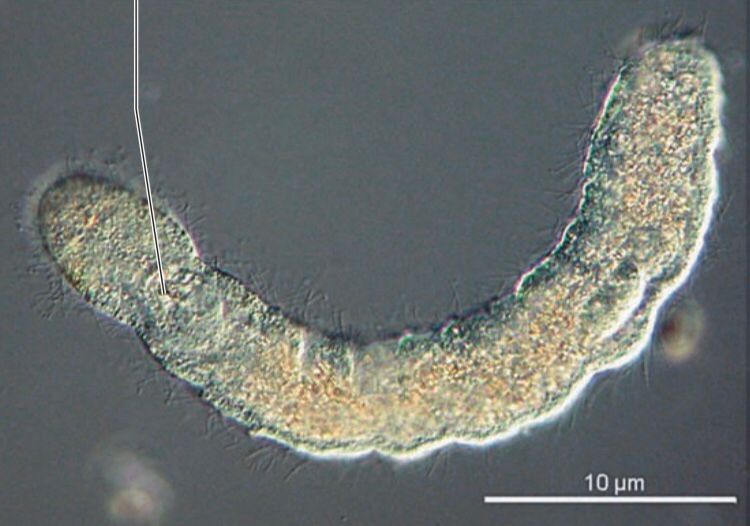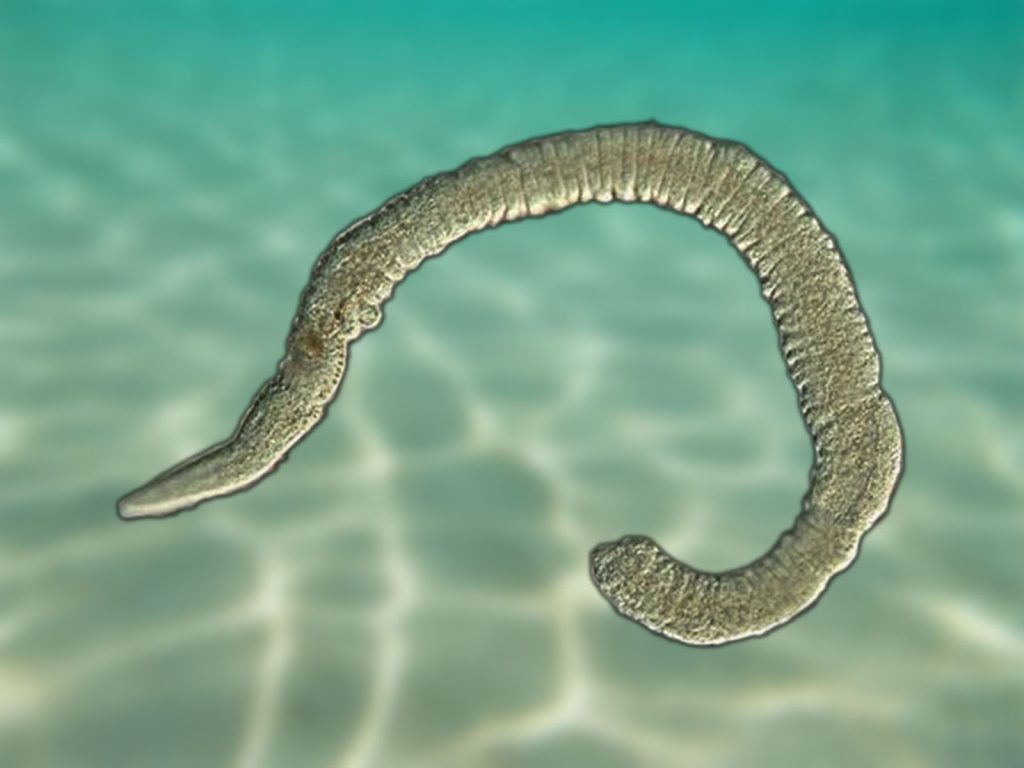Gnathostomulids are delicate wormlike animals less than 2 mm long . The first known species of Gnathostomulida (nath’o-sto-myu’lid-a) (Gr. gnathos, jaw, + stoma, mouth, L .ulus, dim. suffix) was observed in 1928 in the Baltic, but its description was not published until 1956. Since then jaw worms have been found in many parts of the world, including the Atlantic coast of the United States, and over 80 species in 18 genera have been described.

Gnathostomulids live in interstitial spaces of very fine sandy coastal sediments and silt from the intertidal to depths of sereral hundred meters. They can endure conditions of very low oxygen. They often occur in large numbers and frequently in association with gastrotrichs, nematodes, ciliates, tardigrades, and other small forms.
Gnathostomulids can glide, swim in loops and spirals, and bend the head from side to side. The epidermis is ciliated, but each epidermal cell has only one cilium, a condition rarely found in lophotrochozoans other than some gastrotrichs . The nervous system is only partially described, but appears to be primarily associated with a host of sensory cilia and ciliary pits on the head.
Gnathostomulids feed by scraping bacteria and fungi from the substratum with a pair of jaws on the pharynx. The pharynx leads into a simple blind gut. Some morphologists have suggested that a tissue strand connecting the posterior gut to the epidermis is a remnant of an ancestral complete gut, but this conjecture requires more support.
The body is acoelomate with a poorly developed parenchyma layer. There is no circulatory system, so gnathostomulids probably rely on diffusion for circulation, excretion, and gas exchange. Description of the reproductive systems and mating behavior of these worms is far from complete. Gnathostomulids are primarily protandric or simultaneous hermaphrodites engaging in mutual cross-fertilization that occurs internally. Fertilized animals each appear to produce a single zygote developing via spiral cleavage.
Useful External Links
- Gnathostomulida (Unsegmented Marine Worms) by Wolfgang Sterrer
- Phylum Gnathostomulida: Features and Phylogenetic Relationship by Khusboo Jain
- Elucidating the phylogenetic position of Gnathostomulida and first mitochondrial genomes of Gnathostomulida, Gastrotricha and Polycladida (Platyhelminthes) by Anja Golombek


